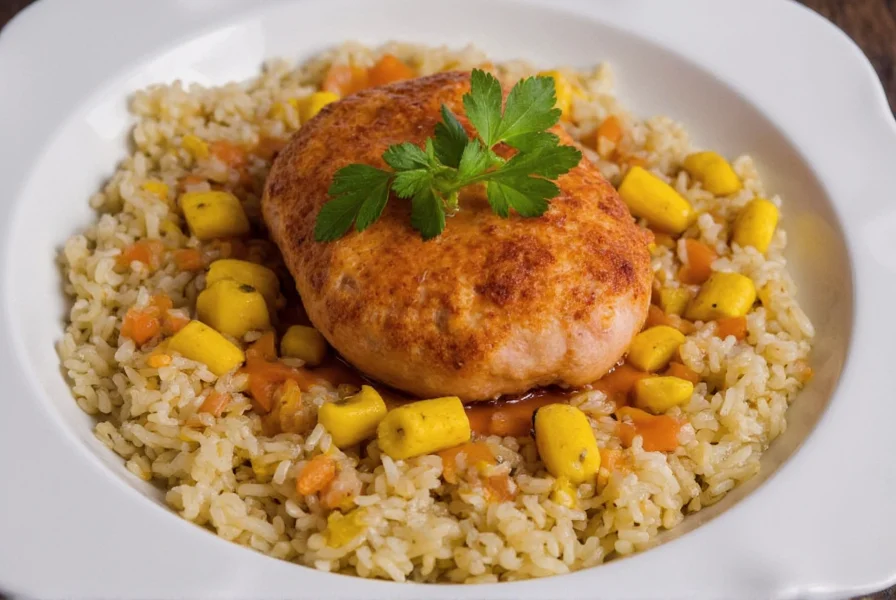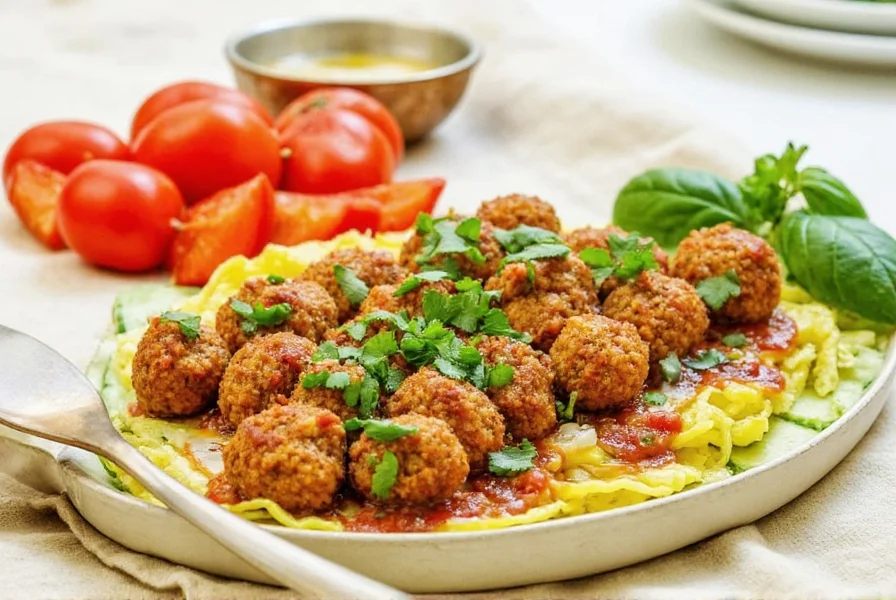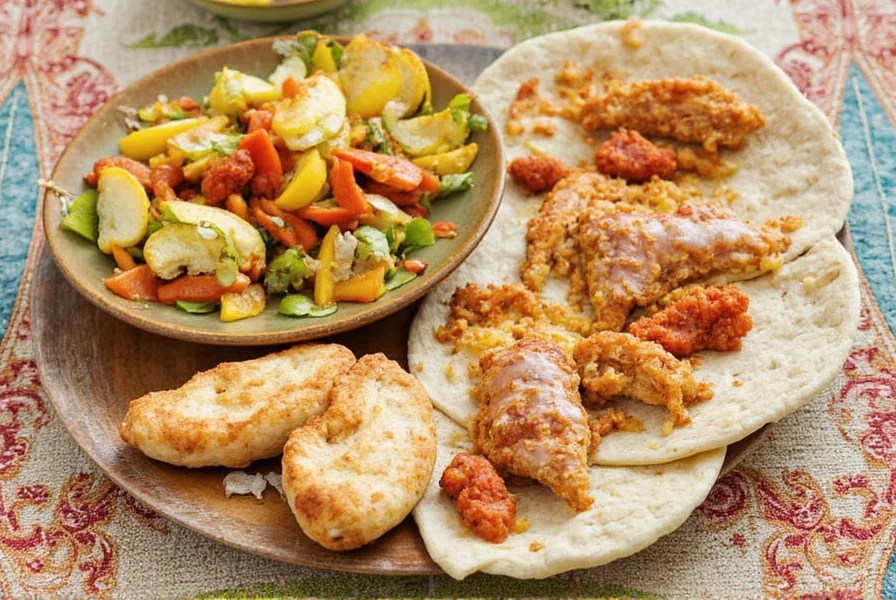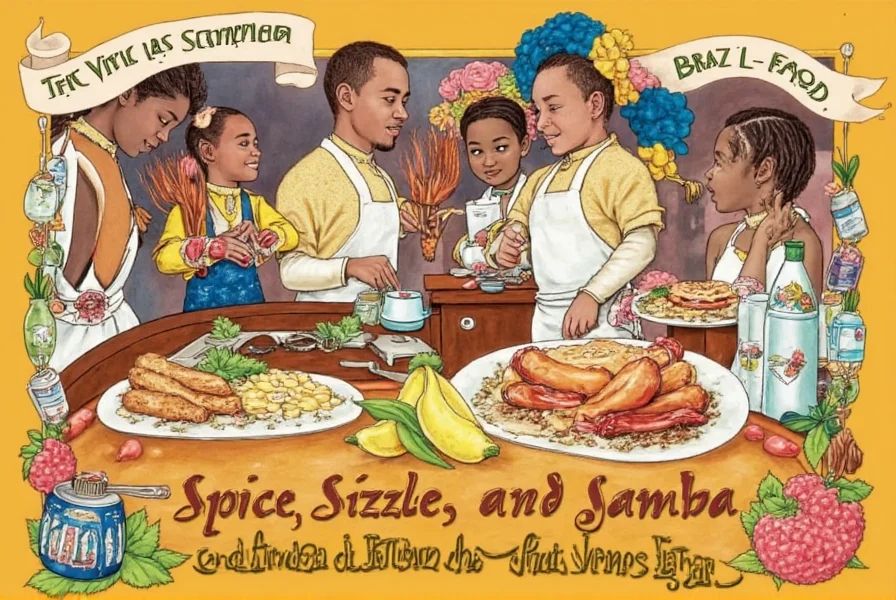Spice, Sizzle, and Samba: A Global Spice Journey into Brazil Cuisine Food
Welcome to a spicy adventure across continents and cultures! Today, we're diving deep into the heart of South America to explore the rich, bold, and often overlooked flavor palette of Brazilian cuisine. Whether you're a seasoned chef or a weekend griller with a love for all things spice, this article is your passport to understanding the magic behind Brazil cuisine food.

Table of Contents
- A Flavorful Introduction to Brazilian Cuisine
- Key Spices in Brazil Cuisine Food
- Traditional Dishes That Define Brazil's Culinary Soul
- Bringing Brazil Cuisine Food into Your Kitchen
- Buying Guide: Essential Ingredients for Authentic Flavors
- Conclusion: Spice Up Your Life with Brazil
A Flavorful Introduction to Brazilian Cuisine
Brazilian cuisine is a celebration of diversity—both in culture and in taste. From the Amazon rainforest to the bustling streets of São Paulo, Brazil’s culinary traditions are influenced by Indigenous tribes, Portuguese colonizers, African slaves, and immigrant communities from Italy, Japan, and Lebanon.
What makes Brazil cuisine food so special? It's not just one single flavor profile—it’s a mix of sweet, spicy, sour, and umami notes dancing together in harmony. The generous use of tropical fruits, native herbs, fiery peppers, and aromatic seasonings sets it apart from its Latin American neighbors.

Key Spices in Brazil Cuisine Food
If you want to understand Brazil cuisine food, you must first get to know its spice cabinet. Here are some of the most iconic spices and seasonings that define Brazilian cooking:
Dendê Oil (Palm Oil)
No discussion of Brazilian spices would be complete without mentioning dendê oil, also known as palm oil. This vibrant red oil is loaded with beta-carotene and brings both color and depth to many traditional dishes, especially those of Afro-Brazilian origin like moqueca and acarajé.
Cumin
Cumin plays a major role in many Brazilian meat dishes, particularly in grilled meats and sausages. Its earthy warmth complements the smoky flavors created over open flames.
Parsley and Cilantro
These fresh herbs are staples in feijoada (the national dish) and various stews. They bring brightness and balance to otherwise heavy, spiced-up meals.
Malagueta Pepper
The Malagueta pepper packs a punch! Commonly used in sauces, marinades, and seafood dishes, this small but mighty chili adds heat without overwhelming the palate.

Annatto (Urucum)
Annatto seeds lend a warm, nutty flavor and a golden-orange hue to dishes like galinhada (a chicken rice dish). They’re also used for their natural coloring properties in traditional recipes.
Table: Popular Spices in Brazilian Cooking
| Spice | Flavor Profile | Common Use | Heat Level (Scoville) |
|---|---|---|---|
| Dendê Oil | Rich, nutty, slightly sweet | Fish stews, acarajé, moqueca | 0 SHU |
| Cumin | Earthy, warm | Grilled meats, chorizo, feijoada | 0 SHU |
| Malagueta Pepper | Hot, citrusy | Sauces, seafood, churrasco marinade | 50,000–100,000 SHU |
| Annatto | Mild, peppery, nutty | Rice dishes, poultry, soups | 0 SHU |
| Cilantro / Parsley | Herbaceous, bright | Garnish, stews, salsas | 0 SHU |
Traditional Dishes That Define Brazil's Culinary Soul
Let’s take a closer look at some of the most beloved and representative dishes in Brazil cuisine food—and what makes them tick in terms of spice and flavor.
Feijoada
This hearty black bean stew with pork parts is considered Brazil’s national dish. Slow-cooked with garlic, bay leaves, and a touch of cumin, it’s usually served with orange slices to cut through the richness.

Moqueca
A seafood lover’s dream, moqueca is a fish stew cooked with tomatoes, onions, coconut milk, and dendê oil. Originating from Bahia, it has strong Afro-Brazilian roots and is traditionally prepared in clay pots.
Acarajé
These crispy black-eyed pea fritters stuffed with dried shrimp or caruru (okra stew) are a staple in Bahian street food. Deep-fried in palm oil and bursting with flavor, they’re both a snack and a sacred offering in Candomblé rituals.
Churrasco
Brazil’s version of barbecue is world-renowned. Meat is seasoned simply with coarse salt and sometimes a dash of cumin or crushed garlic, then slow-roasted over open flames.
Galinhada
This savory chicken and rice dish takes inspiration from Spanish paella and West African jollof rice. Annatto gives it a distinctive color, while garlic and onion add depth.
Bringing Brazil Cuisine Food into Your Kitchen
You don’t have to travel to Copacabana to enjoy the magic of Brazil cuisine food. With a few key spices and techniques, you can recreate these exotic flavors at home!
Tips for Cooking Brazilian-Inspired Dishes
- Use Fresh Herbs Generously: Parsley and cilantro should be added at the end of cooking to preserve their brightness.
- Embrace Palm Oil Sparingly: Dendê oil has a strong flavor, so a little goes a long way. Substitute with olive oil if needed.
- Marinate Meats Overnight: For better flavor penetration, marinate grilled meats in garlic, salt, and cumin before cooking.
- Experiment with Heat Levels: Start with a small amount of Malagueta pepper and adjust to your taste.
- Cook in Clay Pots When Possible: Traditional vessels like clay pots enhance flavor and texture, especially in stews like moqueca.
Spice Blends You Can Try at Home
| Blend Name | Main Ingredients | Best Used In |
|---|---|---|
| Bahian Fish Rub | Dendê oil, paprika, garlic powder, coriander | Seafood, grilled fish |
| Churrasco Seasoning | Coarse salt, black pepper, cumin, smoked paprika | Beef, lamb, chicken skewers |
| African-Inspired Stew Blend | Onion powder, thyme, ginger, annatto | Feijoada, vegetable stews |
Buying Guide: Essential Ingredients for Authentic Flavors
If you're serious about mastering Brazil cuisine food, here’s a curated list of essential ingredients and tools that will help you stay true to tradition while exploring new flavors.
Top 5 Must-Have Products for Brazil Lovers
- Organic Dendê Oil
- Features: Cold-pressed, sustainably sourced, non-GMO
- Advantages: Adds authentic color and depth to Afro-Brazilian dishes
- Use Cases: Moqueca, Acarajé, Feijoada
- Target Audience: Professional chefs, adventurous home cooks
- Occasions: Cultural festivals, themed dinner parties
- Whole Cumin Seeds
- Features: Freshly harvested, aromatic, whole grain
- Advantages: Toasting enhances flavor significantly
- Use Cases: Churrasco rubs, stews, roasted vegetables
- Target Audience: Spice enthusiasts, grill lovers
- Occasions: Weekend BBQs, weekday dinners
- Malagueta Pepper Pods
- Features: Dried pods, intense heat, fruity undertone
- Advantages: More concentrated flavor than flakes
- Use Cases: Hot sauces, marinades, seafood dishes
- Target Audience: Heat seekers, Brazilian food purists
- Occasions: Chili nights, spice tastings
- Annatto Powder
- Features: Natural coloring agent, mild flavor
- Advantages: Safe alternative to synthetic food dyes
- Use Cases: Rice dishes, poultry, broths
- Target Audience: Health-conscious cooks, visual learners
- Occasions: Family dinners, photo-worthy meals
- Clay Cookware Set
- Features: Pre-seasoned, heat-resistant, eco-friendly
- Advantages: Enhances flavor and moisture retention
- Use Cases: Moqueca, stews, casseroles
- Target Audience: Gourmet cooks, pottery lovers
- Occasions: Dinner parties, date nights
Conclusion: Spice Up Your Life with Brazil
From smoky grilled meats to fiery seafood stews and fragrant rice dishes, Brazil cuisine food offers a kaleidoscope of flavors that reflect the country’s rich cultural tapestry. Whether you're exploring the market stalls of Rio de Janeiro or experimenting in your own kitchen, embracing Brazilian spices opens up a world of possibilities.
So next time you're craving something bold and beautiful, reach for the dendê oil, cumin, and Malagueta pepper. Let Brazil's rhythm—its spice, samba, and soul—guide your taste buds on a journey worth savoring.











 浙公网安备
33010002000092号
浙公网安备
33010002000092号 浙B2-20120091-4
浙B2-20120091-4